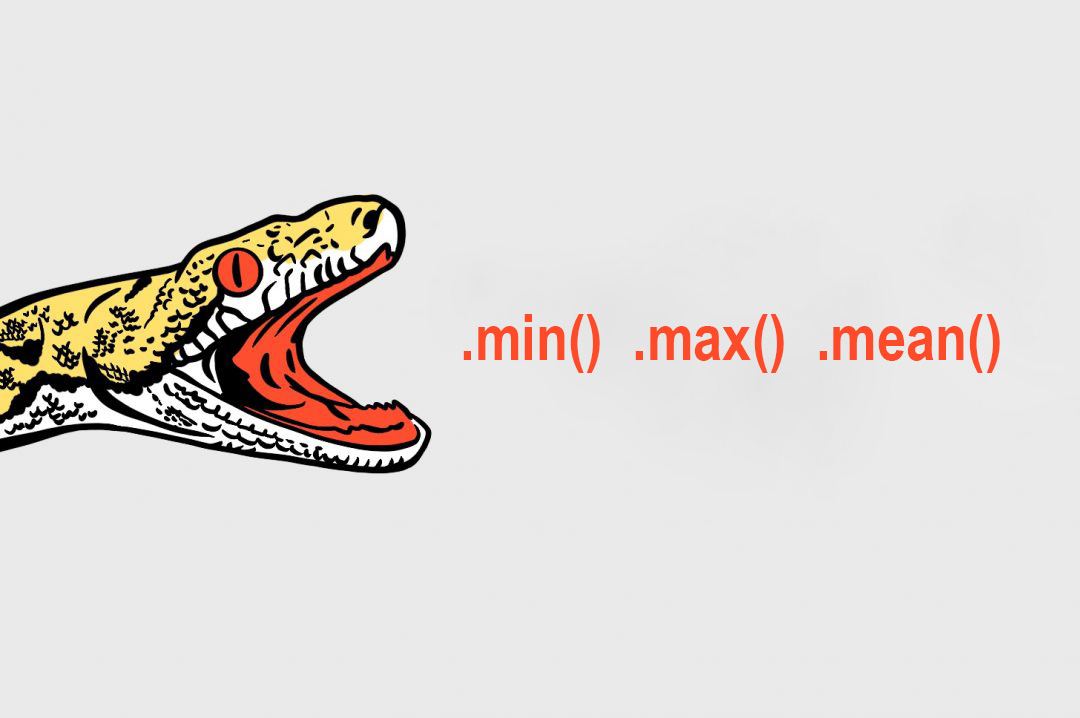 聚合是数据分析中最常见的操作之一。不同的技术为我们提供了有效组合和汇总我们感兴趣的领域(列,属性)的多种方法。本文将讨论熊猫中聚合的实现。在我的专业领域,我很少使用python,但是我经常听到这种语言的优缺点,尤其是在处理数据时。因此,我将在此处绘制与T-SQL的并行操作并给出一些代码示例。作为数据,我将使用最受欢迎的数据集-Irises Fisher。首先想到的是获取任何虹膜参数的最大值,最小值或平均值,并按该植物的种类分组。在python中,使用大熊猫的外观如下所示:
聚合是数据分析中最常见的操作之一。不同的技术为我们提供了有效组合和汇总我们感兴趣的领域(列,属性)的多种方法。本文将讨论熊猫中聚合的实现。在我的专业领域,我很少使用python,但是我经常听到这种语言的优缺点,尤其是在处理数据时。因此,我将在此处绘制与T-SQL的并行操作并给出一些代码示例。作为数据,我将使用最受欢迎的数据集-Irises Fisher。首先想到的是获取任何虹膜参数的最大值,最小值或平均值,并按该植物的种类分组。在python中,使用大熊猫的外观如下所示:import pandas as pd
df = pd.read_csv('iris.csv', delimiter = ',')
print(df.groupby('variety').max()[['sepalLength']].to_markdown())
结果:| 品种| sepal.length ||:----------- | ---------------:|| Setosa | 5.8 || 杂色| 7 || 维珍妮卡| 7.9 |或者:import pandas as pd
df = pd.read_csv('iris.csv', delimiter = ',')
print(df.groupby('variety').sepalLength.agg(
maxSepalLength = 'max',
minSepalLength = 'min',
).to_markdown())
结果:| 品种| maxSepalLength | minSepalLength ||:----------- | -----------------:| ----------------- :|| Setosa | 5.8 | 4.3 || 杂色| 7 | 4.9 || 维珍妮卡| 7.9 | 4.9 |或使用lambda表达式:import pandas as pd
df = pd.read_csv('iris.csv', delimiter = ',')
print(df.groupby('variety').sepalLength.agg([
lambda x: x.max(),
lambda x: x.min()
]).to_markdown())
结果:| 品种| <lambda_0> | <lambda_1> ||:----------- | -------------:| -------------:| || Setosa | 5.8 | 4.3 || 杂色| 7 | 4.9 || 维珍妮卡| 7.9 | 4.9 |DataFrame实例功能to_markdown()
允许您以通常的(控制台)形式显示表(DataFrame)。在T-SQL上,此操作如下所示:select i.Variety, max(i.SepalLength) as maxSepalLength
from Iris i
group by i.Variety
结果:Setosa 5.8Versicolor 7.0Virginica 7.9但是假设现在我们想获取虹膜所有参数的最大值和最小值(如果喜欢平均值),自然地对于每种植物类型,都在这里生成了T-SQL代码:select
i.Variety
,max(i.SepalLength) as maxSepalLength
,min(i.SepalLength) as minSepalLength
,max(i.SepalWidth) as maxSepalWidth
,min(i.SepalWidth) as minSepalWidth
,max(i.PetalLength) as maxPetalLength
,min(i.PetalLength) as mibPetalLength
,max(i.PetalWidth) as maxPetalWidth
,min(i.PetalWidth) as minPetalWidth
from Iris i
group by i.Variety
结果:Setosa 5.8 4.3 4.4 2.3 1.9 1.0 0.6 0.1Versicolor 7.0 4.9 3.4 2.0 5.1 3.0 1.8 1.0Virginica 7.9 4.9 3.8 3.8 2.2 6.9 4.5 2.5 1.4在熊猫中,仅在2019年7月18日的0.25.0版本中出现了群体聚集的可能性(之前所做的工作) ?),有几种变体,请考虑一下:import pandas as pd
df = pd.read_csv('iris.csv', delimiter = ',')
df.groupby('variety').agg(
maxSepalLength = pd.NamedAgg(column = 'sepalLength', aggfunc = 'max'),
minSepalLength = pd.NamedAgg(column = 'sepalLength', aggfunc = 'min'),
maxSepalWidth = pd.NamedAgg(column = 'sepalWidth', aggfunc = 'max'),
minSepalWidth = pd.NamedAgg(column = 'sepalWidth', aggfunc = 'min'),
maxPetalLength = pd.NamedAgg(column = 'petalLength', aggfunc = 'max'),
minPetalLength = pd.NamedAgg(column = 'petalLength', aggfunc = 'min'),
maxPetalWidth = pd.NamedAgg(column = 'petalWidth', aggfunc = 'max'),
minPetalWidth = pd.NamedAgg(column = 'petalWidth', aggfunc = 'min'),
)
结果:Setosa 5.8 4.3 4.4 2.3 1.9 1.0 0.6 0.1Versicolor 7.0 4.9 3.4 3.4 2.0 5.1 3.0 1.8 1.0Virginica 7.9 4.9 3.8 2.2 6.9 4.5 2.5 1.4功能DataFrame.agg(self, func, axis=0, *args, **kwargs)
允许在给定轴上聚合多个操作。作为参数,该函数接收** kwargs(命名的参数,有关详细信息,请参见habr上的文章),该kwargs 是在其上执行操作的列,并且聚合函数的名称用单引号引起来。录音看起来很庞大。继续。使用lambda表达式的相同解决方案看起来更加简洁明了:import pandas as pd
df = pd.read_csv('iris.csv', delimiter = ',')
df.groupby('variety').agg([
lambda x: x.max(),
lambda x: x.min()
])
结果:Setosa 5.8 4.3 4.4 2.3 1.9 1.0 0.6 0.1Versicolor 7.0 4.9 3.4 3.4 5.1 5.1 1.8 1.8 1.0Virginica 7.9 4.9 3.8 2.2 2.2 6.9 4.5 2.5 1.4与其他语言相比,当我解决相同类型的问题时,我经常听到Python写的东西少得多。在这里,与T-SQL相比,可以同意这一点,但是诸如SQL或T-SQL之类的语言工具的表达方式的清晰度和顺序就完全消失了(个人观点)。本文的数据集和代码可在此处找到。0.25.0(2019年7月18日)pandas中的新增功能